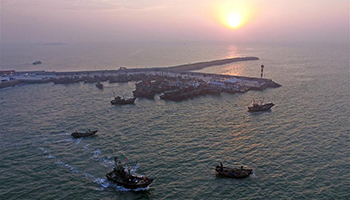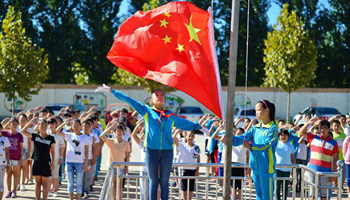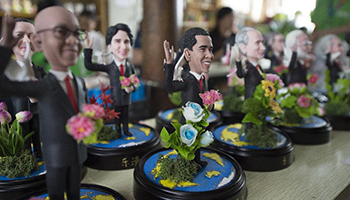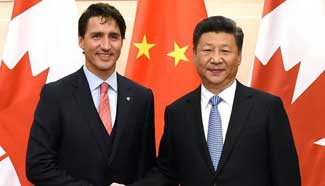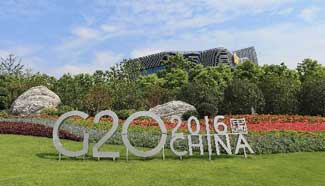BEIJING, Sept. 1 (Xinhua) -- China's seven new free trade zones (FTZs) will bring institutional innovation to economic reform and promise practical gains for both domestic and foreign companies.
The new FTZs in Chongqing, Henan, Hubei, Liaoning, Shaanxi, Sichuan and Zhejiang were announced by commerce minister Gao Hucheng on Wednesday.
A total of 21 provinces and regions filed applications to have an FTZ, and seven won approval, bringing the total number to 11. Shanghai, Guangdong, Tianjin and Fujian already have FTZs.
The FTZ expansion comes as China faces heavy downward pressure and more opening up will help the pace of economic development.
"It has taken three years for China to expand the number of FTZs from one to 11. More FTZs are important to drive supply-side reform," said Xu Guangjian of Renmin University of China.
MORE INSTITUTIONAL REFORM
"The central ideas of an FTZ are institutional reform and innovation," said Jiao Jinmiao, commerce director of central China's Henan province.
FTZ means a new set of rules, freeing investment, easier trade, better governance and financial innovation, he said.
In Henan, the FTZ will be a 120 square-kilometer area encompassing provincial capital Zhengzhou, Luoyang and Kaifeng. Located as it is in the heart of central China, Henan is to develop a modern transportation system and realize its potential as a logistics hub. The province will develop its bulk commodities trade, financial leasing and agriculture, said Jiao.
"A free trade zone will attract companies who want to save costs and make money. Many businesses have expressed willingness to set up here," he said.
Other FTZs are on a similar scale. Hubei's will cover capital Wuhan, Xiangyang and Yichang -- 127 square kilometers -- and will focus on high-tech bases and development of the Yangtze River Economic Belt.
DEVELOPING THE WEST
Three of the seven FTZs, Chongqing, Sichuan and Shaanxi, are in less-developed parts of western China.
Many exporters in Chongqing were more than cheered to hear the news. "The FTZs will be a new window to the global market," said president of Dezhuang Company, a food and hotpot chain in Chongqing.
"We will seek freer flow of goods, logistics and information across the border through the FTZ when tariffs and costs are lowered," said Tang Zongwei, deputy management director of Liang Jiang New district, part of the planned zone in Chongqing.
The FTZ in Chongqing will be in Liang Jiang New Area, West Logistics Park and a micro-electronics park.
In the first half of 2016, a total of 4,923 foreign-funded firms were established in the four current FTZs, with investment amounting to 359 billion yuan (53.8 billion U.S. dollars).
According to a poll by the State Council Development Research Center, 82 percent of firms surveyed reported "notable progress" in the business environment, and 95 percent were optimistic about future development.
SHINING UP THE RUSTBELT
The news of an FTZ brings relief and joy to Liaoning Province, under immense pressure from a faltering economy.
The regional economy in the three northeastern provinces grew 2.2 percent in the first half of 2016. In many other parts of the country the figure was well over 7 percent.
"Having an FTZ is like getting the drugs it needs to kill the ailment the economy has suffered for so long," said Liang Qidong, deputy director of Liaoning academy of social sciences. Liaoning will focus on market reform to transform the old industrial base into a more competitive area, he said.
Unlike eastern China, there is very little reliance on foreign trade in the northeast, only 3.4 percent of the national total in 2015.
Compared with Heilongjiang and Jilin, Liaoning is in a better position to access foreign markets. Liaoning has strong industrial infrastructure in petrochemicals, machine tools and mining. Its coastal city Dalian is one of the biggest port in the region.



